Let me preface this post with a disclaimer before we jump into the fun: this lesson requires a lot of preparation and care to create, but after it’s done it works like a well-oiled machine and can easily be adapted for different grade levels by swapping out a few puzzles later on. Also, if it seems like there are a lot of steps here, that’s because this lesson is designed to take up a full 45 minutes of class time. Feel free to use the whole idea or trim it down for a fun warm-up!
Okay, let’s begin!
I love mysteries, and I like to center a lot of my classes on solving a mystery of some sort. I find that presenting some kind of interactive problem that needs an answer keeps students interested, and most importantly, gets them communicating and thinking in English (with a few incentives and/or penalties built in to keep up the good work). I was inspired to create an ESL escape room after thinking back to my own experiences with thrilling escape or puzzle games, and seeing similar ideas for native English classrooms online.
A lot of my students are afraid of making mistakes in English. Because of this, I wanted to create something they could really wrestle with, since struggling and making mistakes actually increases learning! (https://www.youcubed.org/think-it-up/mistakes-grow-brain/)
This was gonna be a challenge for me. How could I simultaneously get all 40 students to work together without finishing early, cheating, or just plain giving up? More importantly, how could I explain how the game even worked without confusing them?
I looked through my desk files in search of inspiration, and found a deck of playing cards, illustrated synonym and antonym cards, and instructions for a few English logic puzzles left over from past ALTs. I also had some white cardboard sheets at my disposal. Of course here, you can use whatever you’d like. It doesn’t affect the concept. I just like to utilize what I have on hand to create something new.
I chose a Secret Agent theme with the playing card symbols tying it all together. Then I created the other facets of the game during my free time at work (if I recall, this was during a break so I didn’t have a lot to do in the office otherwise, and I have a strict “don’t bring work home” policy for myself. However, I broke that rule just a lil’ bit later on when I asked my husband for help. It was completely unnecessary but super cool and worth it- you’ll see why later on haha.).

I got permission from my JTEs to use the Active Learning room at our school, which is a bit more spacious and has rounded tables. Of course a regular classroom is fine, but this was perfect because I divided the students into 8 different groups for this lesson, and needed a bit of space to lay out the puzzle materials and my laptop.
This is what they see when they enter the room:
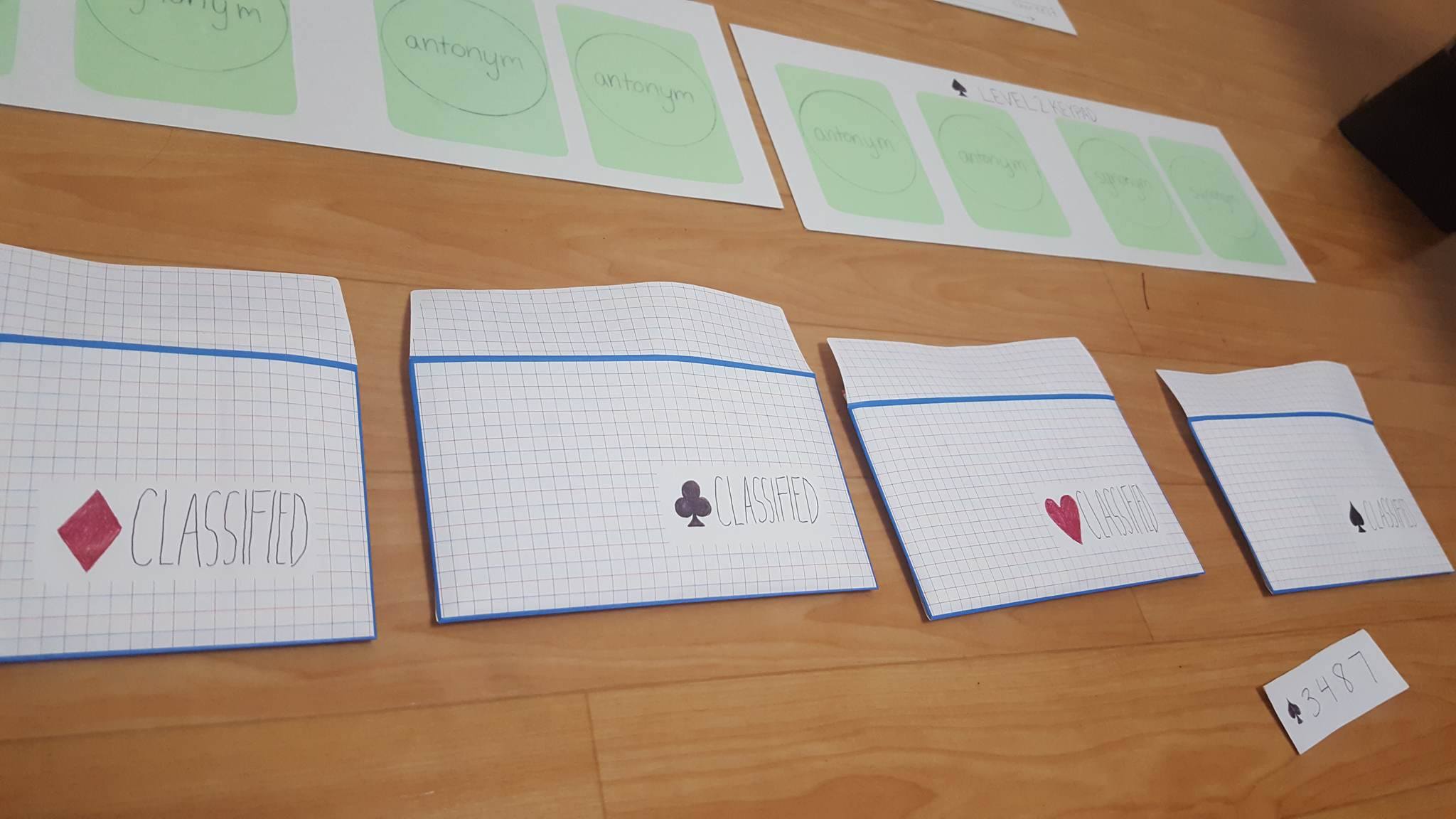


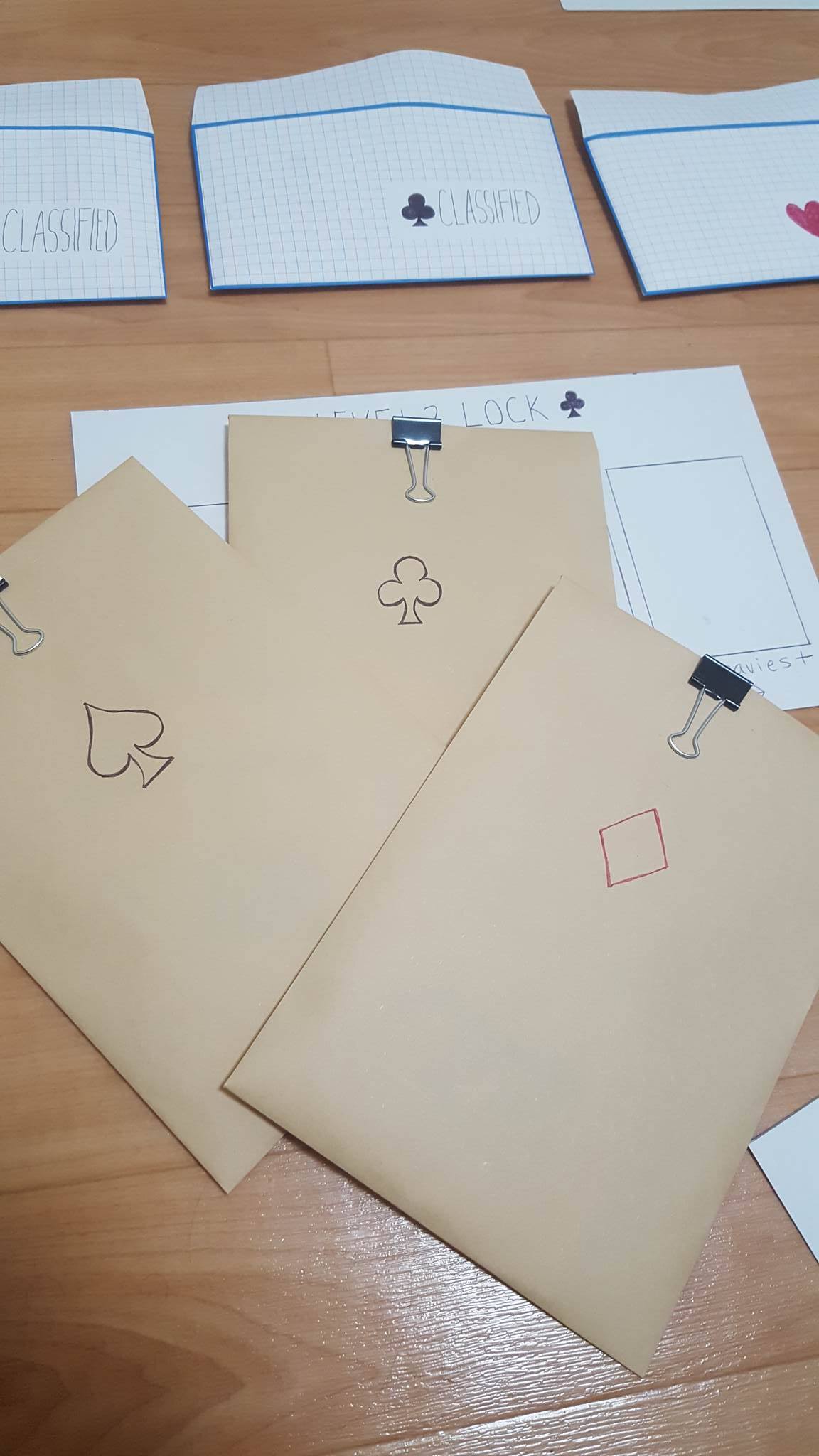

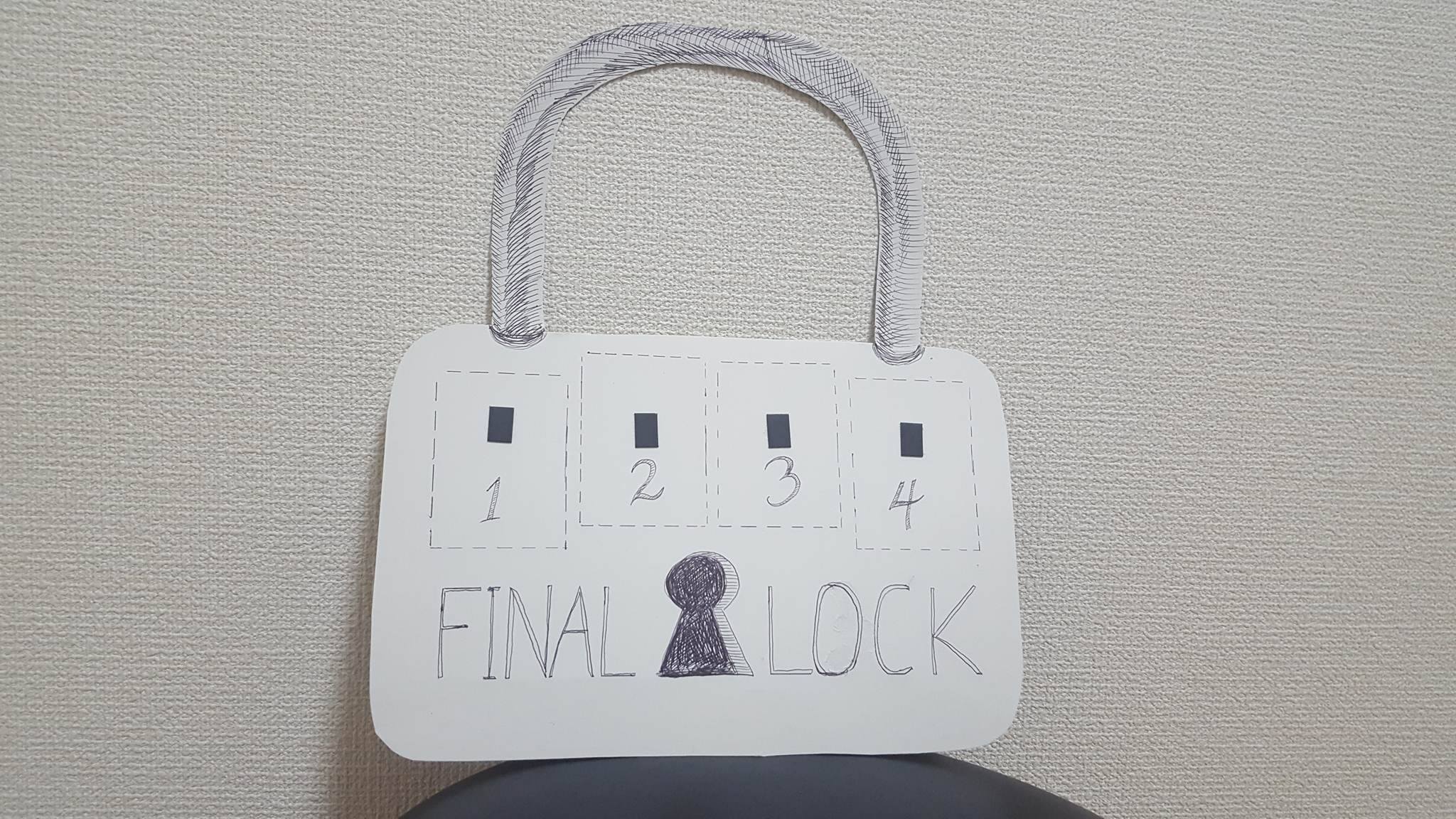
The best way to describe how the lesson works is to explain it from the students’ perspective. So here we go!
First, students enter the room and see all the stuff laid out. I have a little bit of quiet background music playing (I really recommend the “Winter Soul” chillstep mix on Youtube. There are no words and it gradually alternates between low and high tempo, which created a cool atmosphere for the Escape Room). I don’t explain anything yet, but each group gets a piece of scratch paper with some helpful English phrases on it.
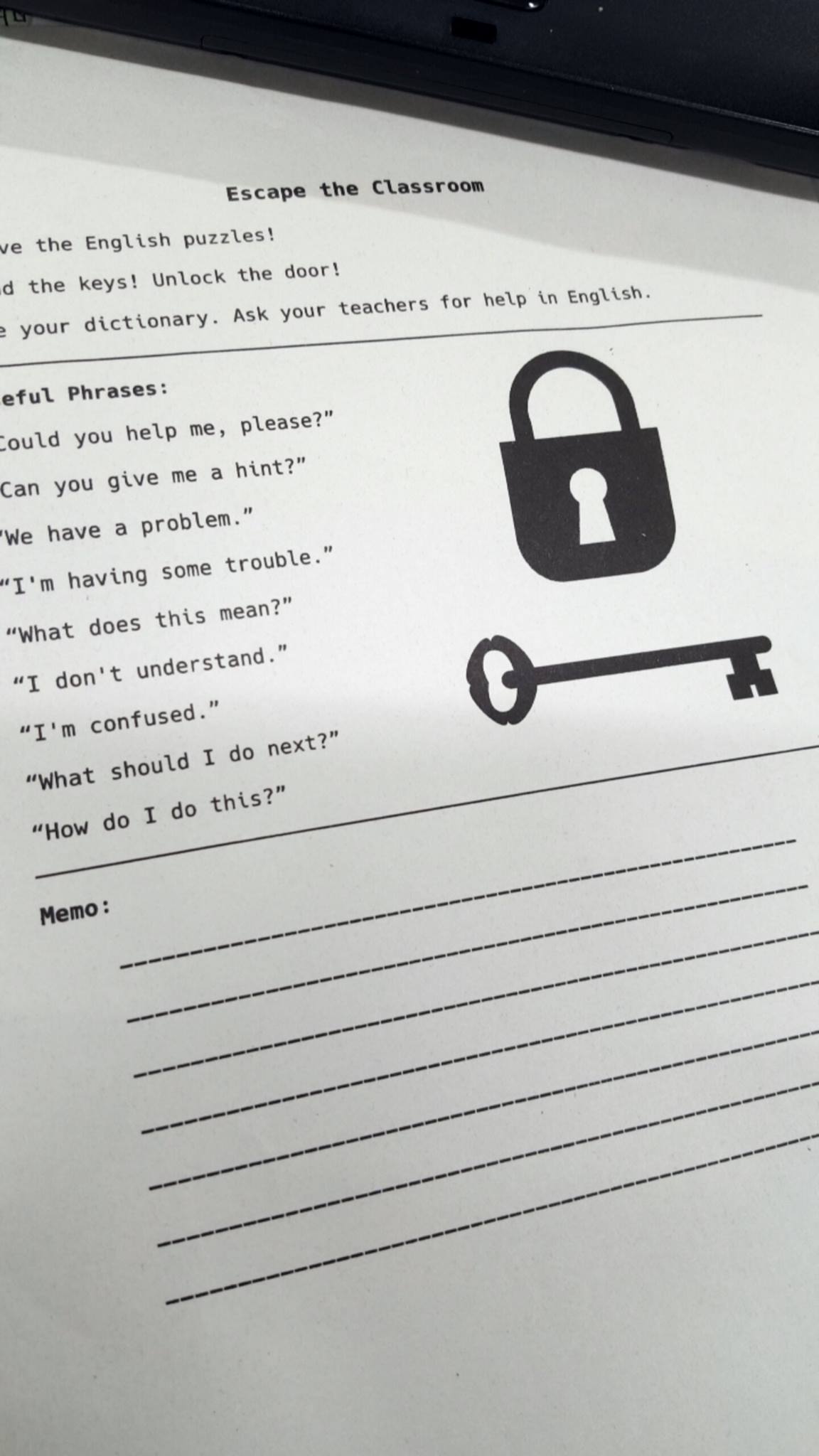

I start the timer as soon as the bell rings. I explain that the students will need these worksheets in order to survive and pause dramatically (they get a little curious at this point). They can write any notes at the bottom and if they need help, they must ask in English (otherwise no hints). Then we jump right in. I make a big show of the lock (which is quite large already), then attach it to the door with a “chain” ribbon and magnets.
If you didn’t already know this, I’m dramatic. At this point I let out one of those fake villain cackles and explain my evil plan to make them study English forever in this locked classroom. “You’ll never escape unless you can solve my English puzzles! Ahaha!”
Okay, so after we are done laughing, I explain that there are three levels. Level three holds the keys, and you need four keys to unlock the door (as you might guess, that means 2 teams end up working together at the end to get 1 key. Each team progresses through the levels at their own pace. Some teams are inevitably faster to solve puzzles than others, so when that happens they are assigned to help another team. This is good because the more experienced kids can teach the others what they know, and everyone stays busy throughout the class.).
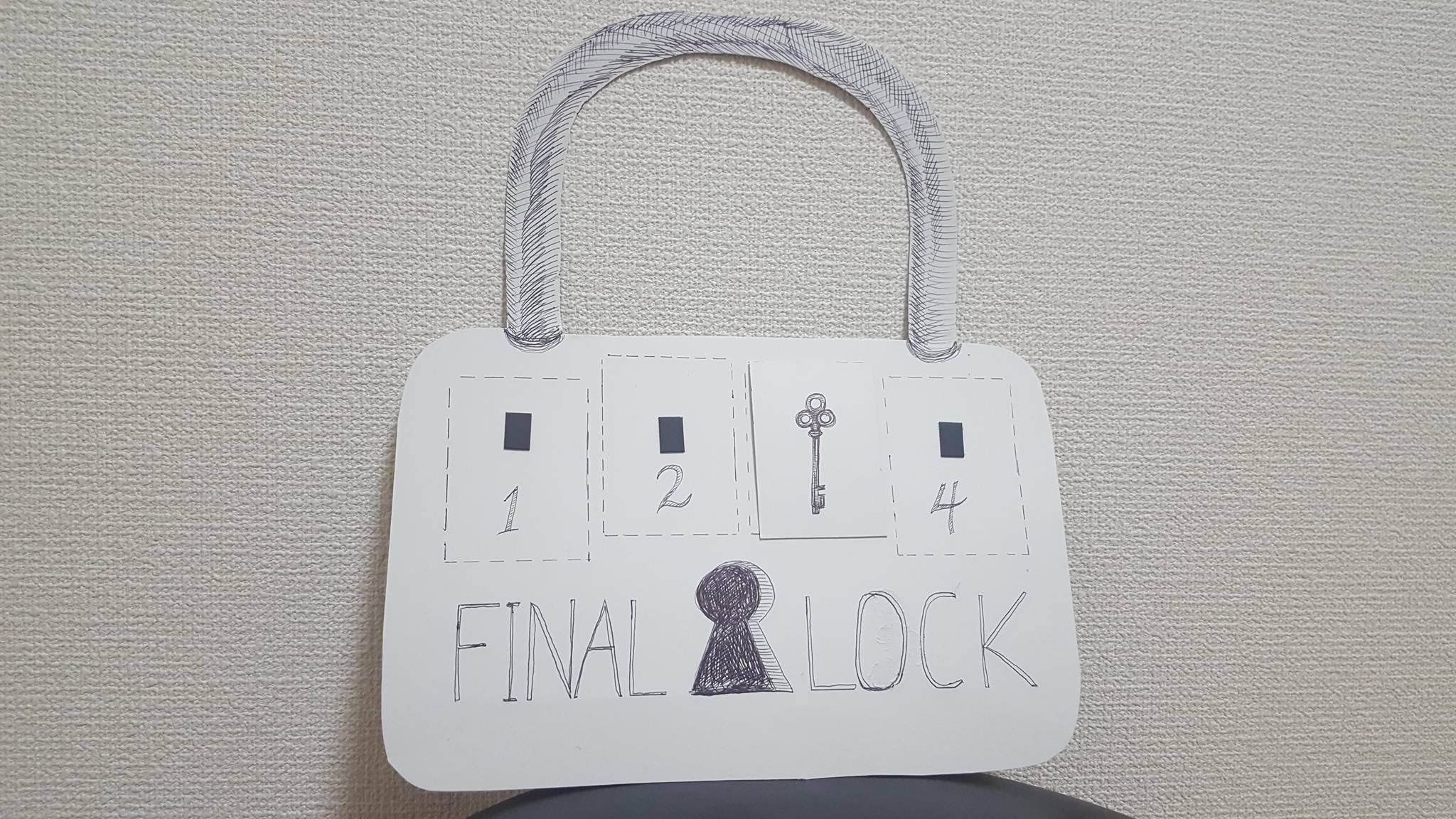

Then I announce that each team will start at Level 1 by taking a small packet from the marked “CLASSIFIED” envelopes. I don’t give them any further instructions besides that to begin. As seen above, there are 4 CLASSIFIED envelopes marked with the 4 playing card symbols. Each folder contains 2 packets, so there are 8 packets total (1 for each team). Each team can freely pick whichever packet they like, and the corresponding symbol will now be their team symbol (heart, spade, club/clover, and diamond). Each packet contains important instructions for progressing to the next level (this lesson doubles as an activity for reading and following instructions correctly).
LEVEL 1


Each packet in level 1 contains a scrambled sentence that utilizes some grammar they have learned recently. These should be a challenge so that the teams don’t solve them right off the bat. I made each sentence about 12-13 words long. Each word has a random number or letter written behind it. If the sentence is correct, the correct secret code will be unveiled! If students are completely lost I get them on the right track (if they ask in English first, of course), but for the most part I want them to make a lot of mistakes. Notice that the instructions call for typing the secret code in a computer. This is the fun part I mentioned at the beginning. If you don’t have a computer available for your classes, you can just manually check their “code”, but this allows students to check themselves multiple times (and learn from their mistakes) in a cool way. It also doesn’t require the internet and anyone can use or share it!
“Hacking” into the Computer
I was telling Josh about my escape room plan one evening and how it would be cool to have some kind of system for students to automatically check themselves and get a real sense of accomplishment when they got it right. I envisioned a simple interface that gave the impression of hacking into a secret file on someone’s computer. To my surprise Josh said “why not?” and whipped up a sweet lil’ program with his coding skills. Despite his claims that something like this was ridiculously simple to code, I was over the moon! Lemme show you how it works!
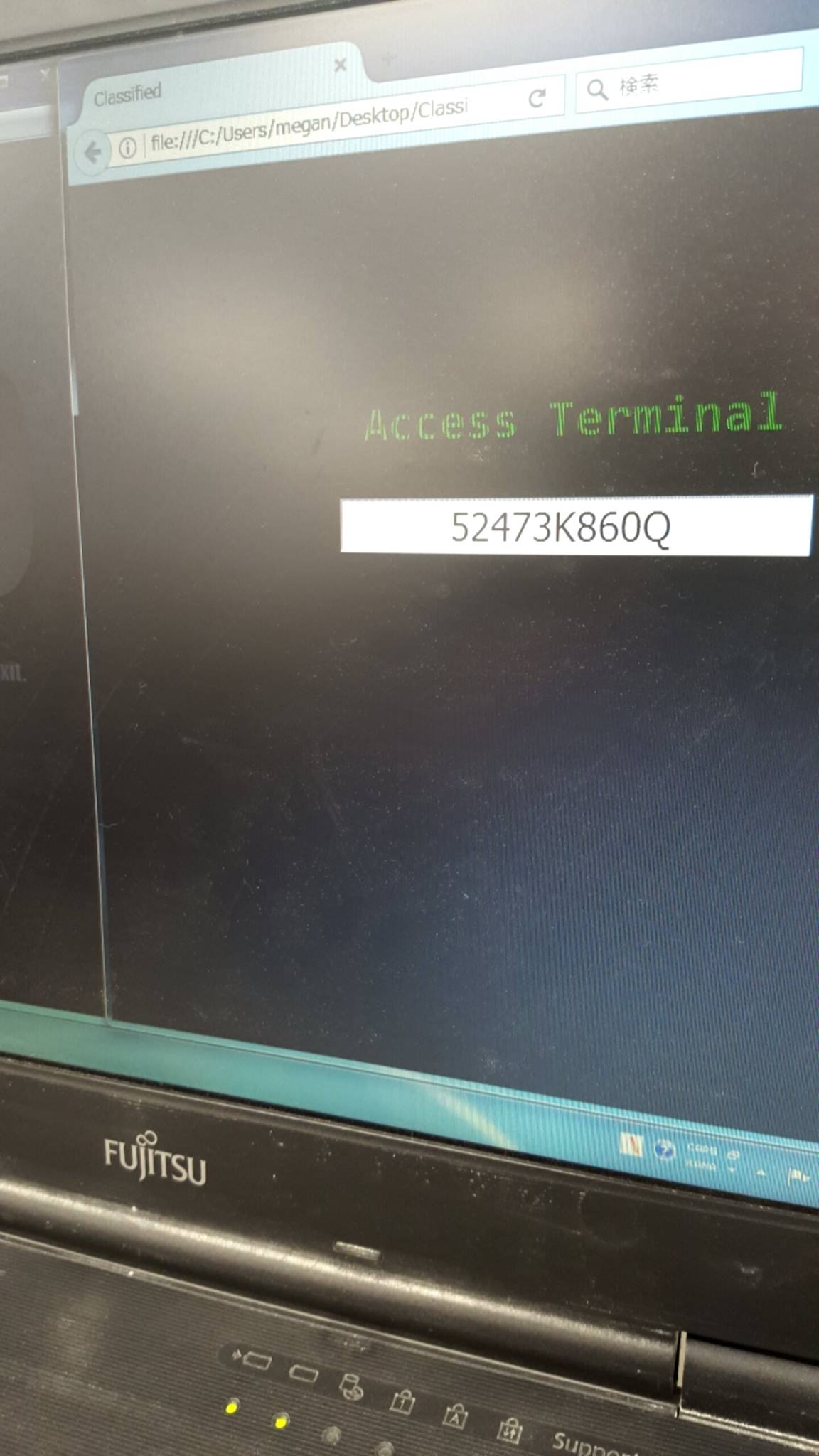

Students type in the secret code they gleaned from the scrambled sentence and hit Enter.
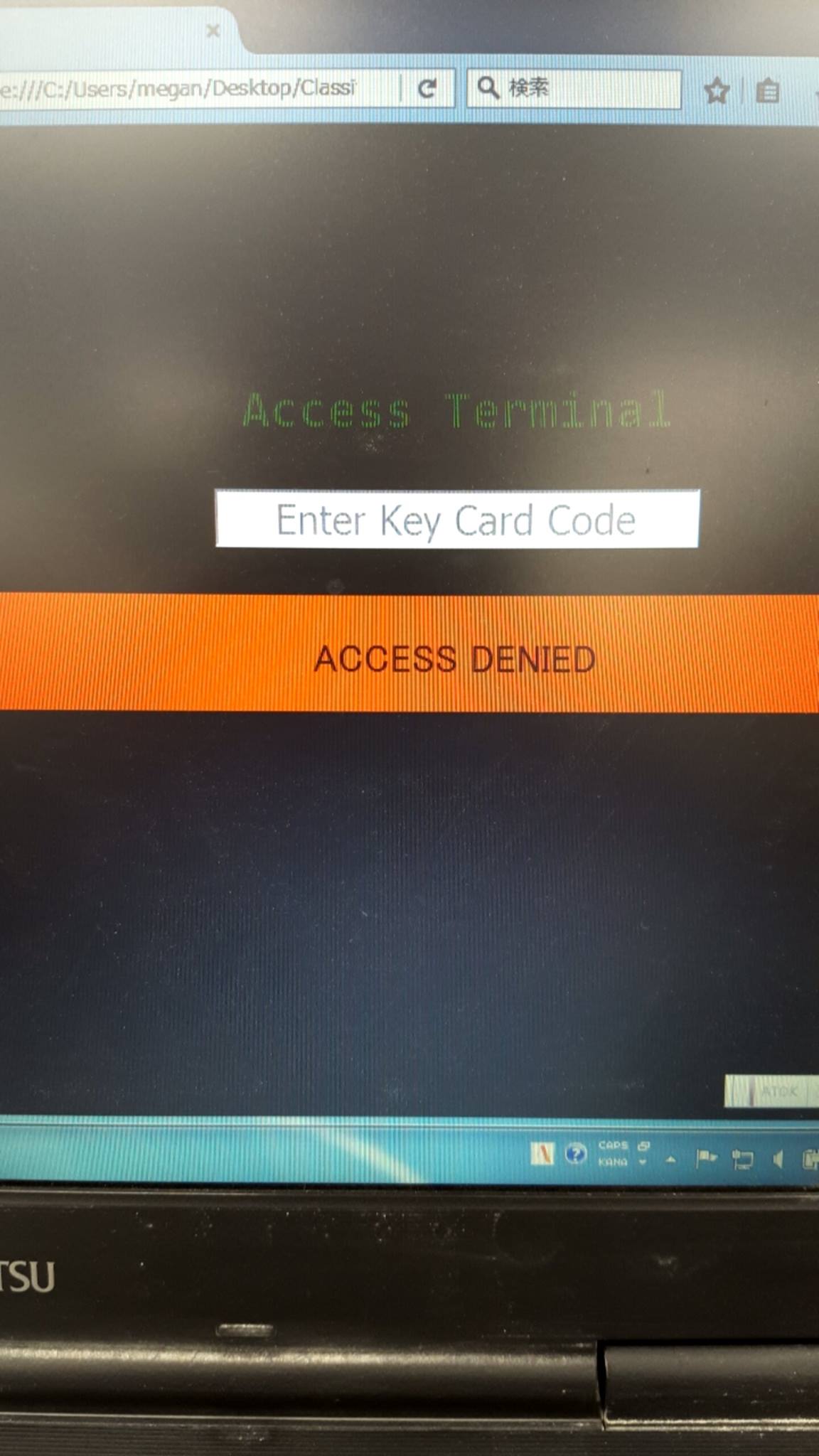

They can try as many times as they like to get the right answer. Each team has a completely separate code, so “cheating” the system isn’t an issue.
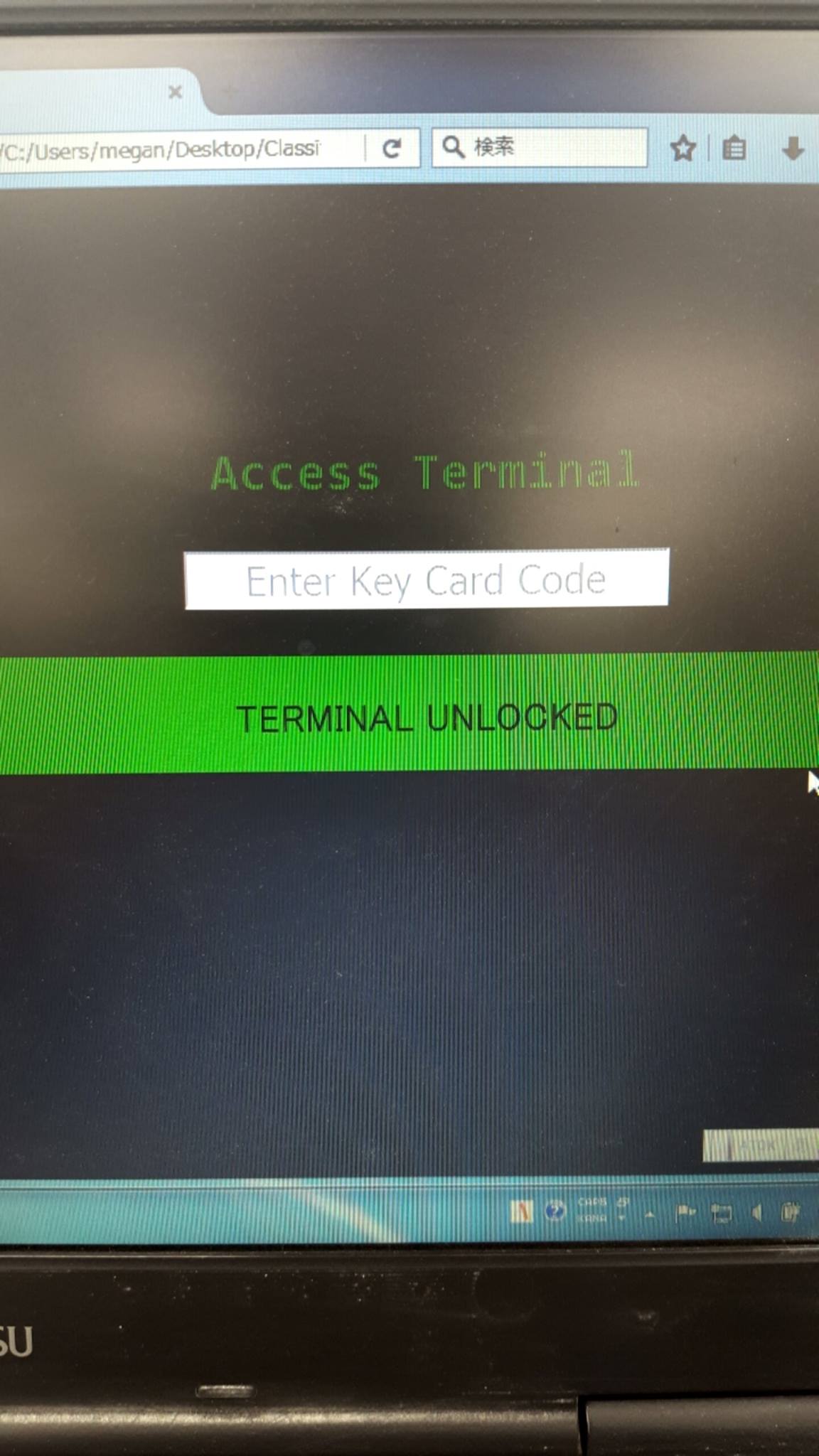

Once they pass Level 1, I give them the corresponding file for Level 2.

LEVEL 2
Level 2 consists of 8 assorted English puzzles. 4 of them are pretty difficult, 4 of them are regular difficulty. If a team finishes level 1 really fast I give them a “difficult” one to even out the speed of the class, and to make sure everyone is equally challenged. These can be any kind of puzzles you like. I’ll show you a few of the ones I used.
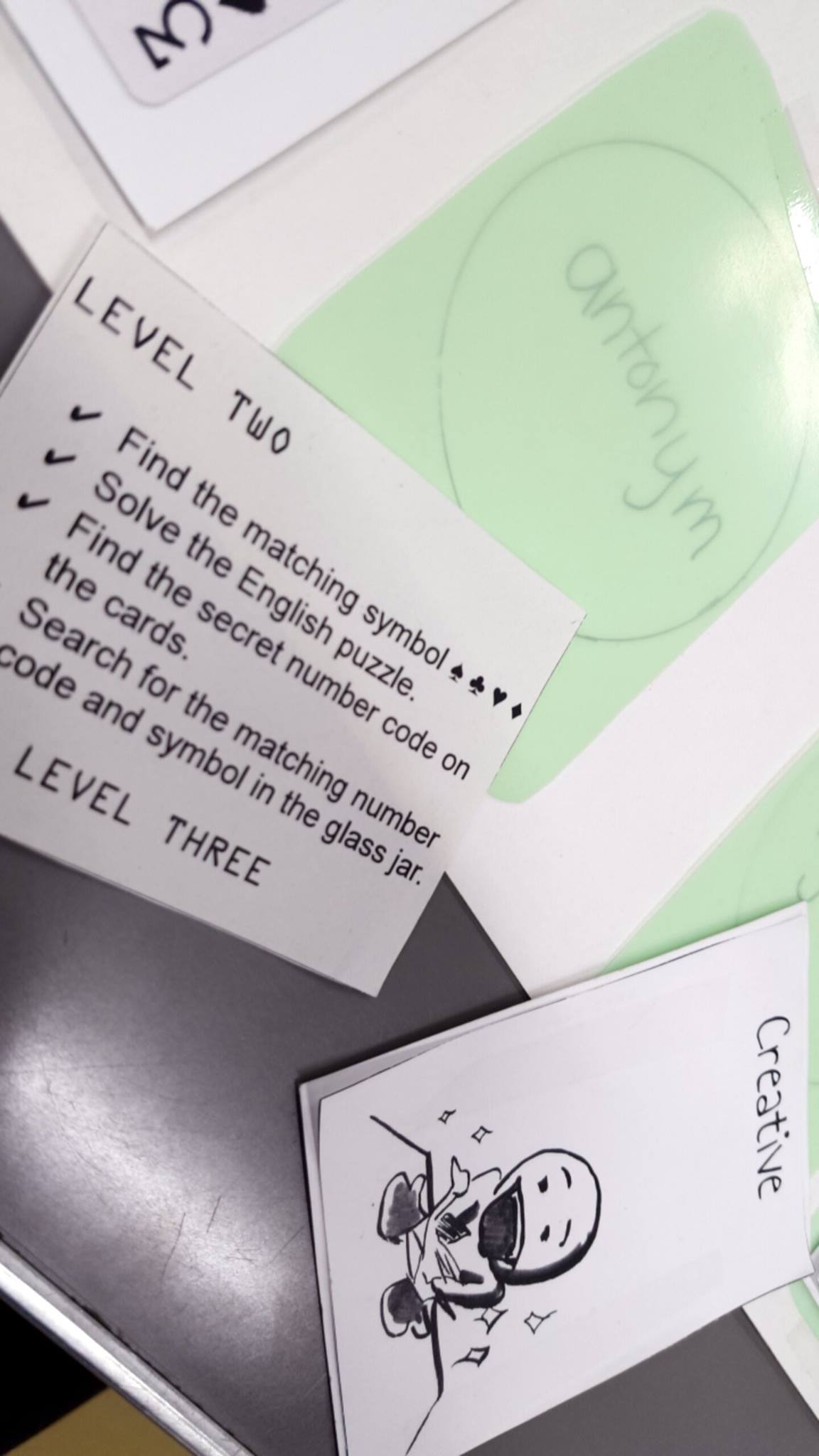





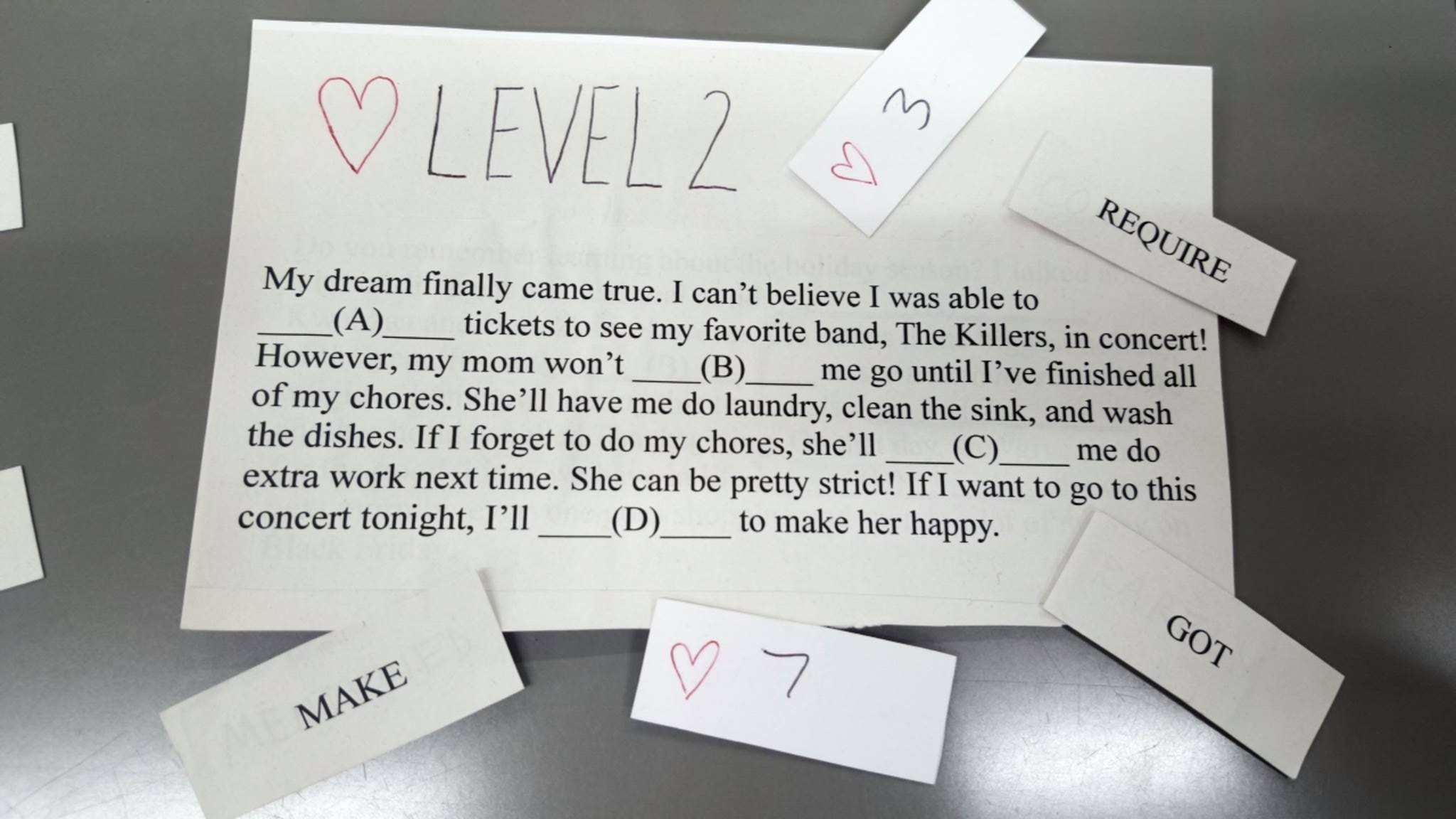

Each puzzle results in a four digit code- if students don’t read the instructions carefully, they will try to type that code into the computer again to no avail. This time the team must search for the matching number code and symbol in a glass jar on the table. There’s only one correct answer for each puzzle, and lots of incorrect answers are stuffed into the jar to throw them off. If they can find the correct number slip in the glass jar, then it’s on to level three!
LEVEL 3

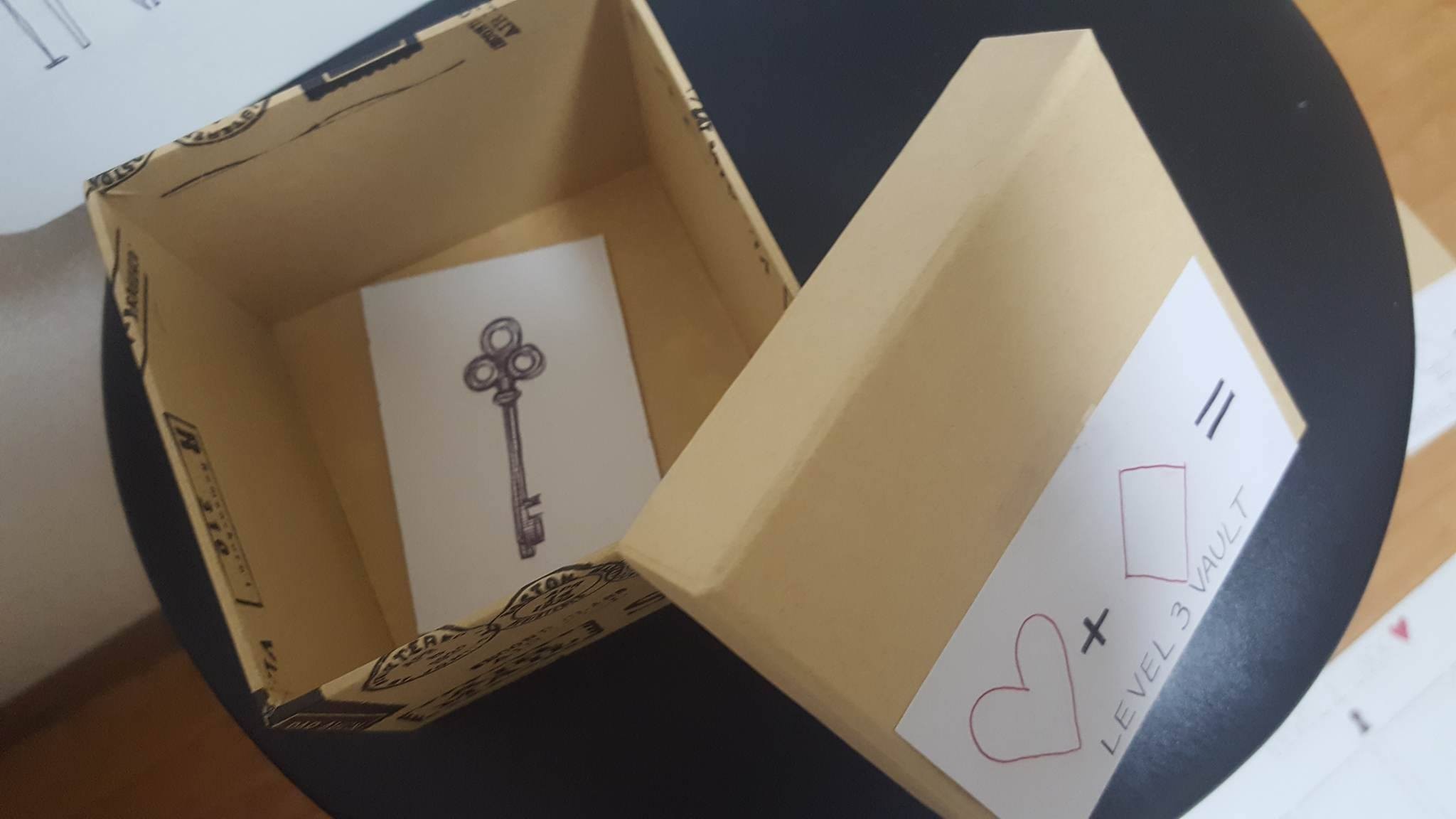
This continues until all four keys are found. I announce to the class that my plans are foiled and they have successfully escaped the classroom! Everyone usually finishes with about 1-3 minutes left to spare (one time we finished with 5 seconds to spare- that was by far the most thrilling class haha), so use that time for classroom cleanup and have students return all of their puzzles (you don’t want to have anything come up missing in the next class!). If you have more time than that, you can start up a quick free talk activity or invite students to try out different puzzles. I was happy to see some of the teams eager to try another puzzle!
Sometimes, despite your help, students will run out of time and miss the last key. That’s okay too- but you should definitely laugh maniacally and tell them they will have to learn English forever now.
———-
I hope you enjoyed hearing about my convoluted lesson plan! Like I said earlier, it’s a lot of work upfront but it’s self-sufficient in class! If you were inspired by this at all, I’d love to hear what you come up with! Oh, and if you’d like a copy of Josh’s nifty little “hacking” program, let me know!
Cheers!
Megan




Megan,
I bet your students enjoyed playing your game and entering the codes in the computer! What a clever way to learn English!
Love,
Grandma Susie
Hi Megan, i am interested in the “hacking” program. Will you be able to share?Thanks.
Hi Angeline,
Thanks for your comment. I have a Dropbox link I can share, if you are still interested!
-Megan
Hi Megan,
Congratulations for such a cool lesson plan! It’d be great if you could share it with me. Thanks a lot!
Leyre
Hi Leyre,
Let me know if you’d like the Dropbox link for the “hacking” program! I can also send some of the files your way but as this is more of a flexible framework for an ESL lesson rather than a concrete plan I don’t have very detailed notes on my puzzles and procedures besides what is depicted here. Thanks for your comment!
-Megan
Wow this looks amazing and well thought out, could i have the link please?
Hi there Megan!
This looks amazing. Would you be willing to send me the link for the ‘Hacking System”? I am really wanting to do something like this for my school’s festival. This is definitely the best Escape the Room plan I have found.
Jamie
Hi Megan,
This looks great! I am also an ALT and interested in doing an escape room type of activity for Halloween this year. I was wondering if you could share some of puzzles with me? My kids are really low level and can be unmotivated so I’ve been trying to figure out puzzles that would be challenging but not too challenging for them.
Thanks in advance!
Hello, this is awesome! Is there anyway I could have the hacking program for the computer?
Hi Megan,
Your lesson plan inspired me to set up an escape room as well! Could you send me the link with the “hacking program”? That would really finish things of.